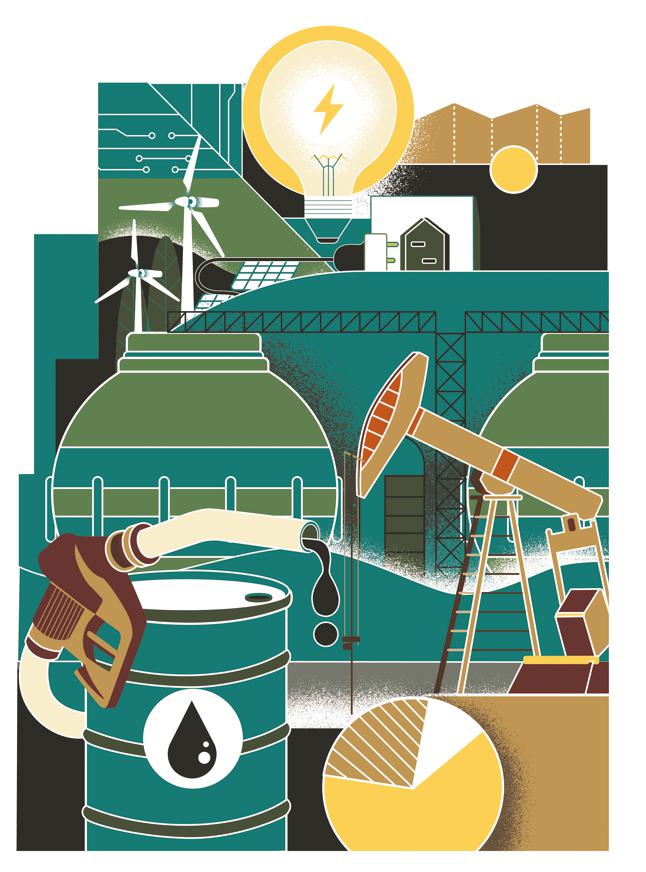
[Photo by Shi Yu/China Daily]
By Wolfgang Roehr
Cooperation and coordination are critical to curb the otherwise inexorable and catastrophic temperature rise
At the United Nations Climate Change Conference in Glasgow (COP 26) in November 2021, countries agreed to bring forward plans to limit global warming to 1.5 C above pre-industrial levels, calling for stronger national action plans to be submitted in 2022 and a phase-down of coal power. Developed countries were urged to fully deliver on the goal of providing $100 billion a year for developing countries.
In a major report in February 2022, the Intergovernmental Panel on Climate Change stated that any further delay in concerted global action would miss a brief and rapidly closing window of opportunity to secure a livable and sustainable future for all.
The pledges that governments have so far submitted would only limit temperatures to under 2 C.Furthermore, recent forecasts indicate that if current policies continue unchanged, the world would soon be hotter by 2.7 C or even 3.6 C above pre-industrial levels. Three former UN climate chiefs have just described such a scenario as "catastrophic".
The extreme weather conditions in the months since the COP 26 should be alarm bells for the world that more needs to be done. Yet, energy security also remains important. Moreover, the COVID-19 pandemic and the Russia-Ukraine conflict have put other issues to the fore that threaten to take precedence over the climate emergency.
Where do the three major actors that are between them responsible for some 50 percent of global greenhouse gas emissions, namely the United States, the European Union and China, stand today?
In the US, greenhouse gas emissions are to be reduced by 50-52 percent by 2030, and net zero emissions should be achieved economy-wide no later than 2050. But in 2021, the US burned some 25 percent more coal than in 2020, and the output of greenhouse gases rose 6 percent. President Joe Biden has proposed what he described as the most ambitious environmental and climate agenda in history. Yet to fulfill these promises, he requires major legislation that appears increasingly remote. Given his tenuous position in Congress-which is all but certain to worsen in the midterm elections in November-his proposal to spend some $555 billion on climate measures is unlikely to become reality. Biden has also attempted to mitigate the worldwide rise of gasoline prices by releasing crude oil from the US' Strategic Petroleum Reserve and selling oil and gas leases on federal land. If current policies continue, greenhouse gas output might by 2030 not be 50 percent, but only 10 percent lower. Some analysts therefore describe Biden's climate ambitions as "all but dead".
The picture for the EU is, at first glance, rosier. The EU has pledged a reduction of greenhouse gas emissions of 55 percent by 2030 and to become carbon neutral by 2050. A few days ago, it submitted official data to the UN indicating that it had by 2020 slashed greenhouse gas emissions by 34 percent below the 1990 levels, well overshooting its own target of 20 percent. While the EU claims that this is a confirmation of a 30-year downward trend, others are not so sure. In 2020, EU countries had shut down their economies to contain the novel coronavirus. But in 2021, as their economies recovered, greenhouse gas emissions under the EU Emissions Trading System alone rose more than 7 percent. Furthermore, European governments are currently attempt to lower the price of energy from fossil fuels by slashing taxes on the consumption of gasoline, thus counteracting their own stated intention to discourage the use of fossil fuel-driven cars. In Europe, too, analysts therefore are wary of a rebound in emissions.
China has announced that it will peak greenhouse gas emissions before 2030 and become carbon neutral before 2060. That means it will have to achieve the world's highest carbon emission reduction-from carbon peak to carbon neutrality-in the shortest time in world history. While it has achieved progress in the past two years, this remains challenging as China's per capita electricity consumption is currently still increasing. Transformation of the country's coal-based energy structure cannot be reached overnight: reality has to be taken into account. China should not only have a green and clean environment, but also ensure that production and life are normal. It is therefore important for China to flesh out its policy framework and describe in greater detail how its aims will be achieved on the provincial, city and industry levels.
In the interest of maintaining energy security and combating price rises, the US, the EU and China currently all favor a more flexible approach to reducing greenhouse gas emissions. Were such tendencies to persist, they could become a challenge to the realization of the lofty goals agreed at the 2015 Paris Conference. To successfully master such a challenge, timely and effective trilateral cooperation is needed. This will have to be addressed at the UN Climate Change Conference to be held in Egypt (COP 27) in November 2022.
The author is a former member of the German Foreign Service and a researcher at the German Studies Center at Tongji University.

 中文
中文





